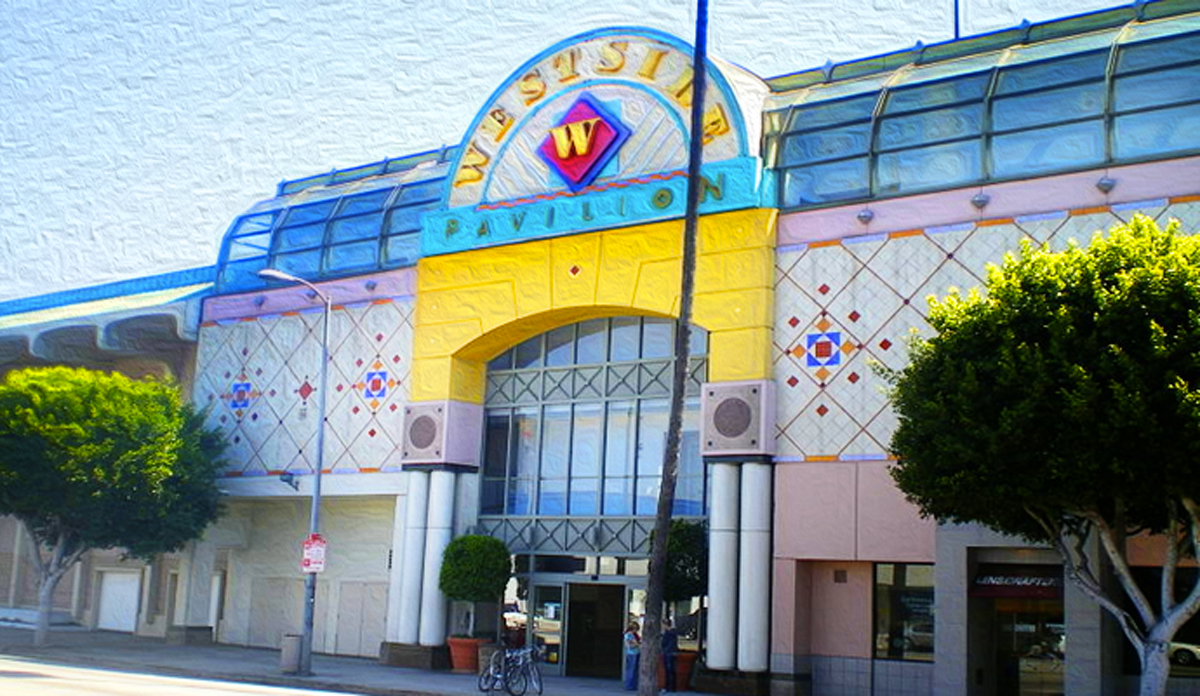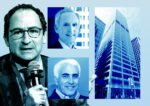Trending
Westside Pavilion is dead — Long live Westside Pavilion!
Macerich and HPP's move to transform the struggling mall into a creative office could serve as a model, industry pros say

Los Angeles may have contributed to the rise of the American mall culture and their temples to consumerism, but now the city may also be hastening their demise.
Nowhere is that more apparent than at the Westside Pavilion mall, whose owners, Hudson Pacific Properties and Macerich, announced last month plans to convert 500,000 square feet there into an office park.
Where shoppers once strolled through on weekends, hunting for the latest gadget or perfect outfit, workers will now trudge into on weekdays, game face on, Thermos in hand.
The Westside Pavilion on West Pico Boulevard was struggling amid shifting consumer tastes and the continuing rise of online retail. The decision to close the mall wasn’t so much of a surprise, and the $475 million plan to convert most of it into creative office space could be the logical next step.
Could this be the future for Los Angeles’ underperforming malls?
Richard Abbitt, who is managing director at Lee & Associates’ West Los Angeles office, said the Westside Pavilion conversion could become a model for other malls, but expects others in the industry to be patient.
“They’ll take a close look at it and see how successful it is once it’s out on the market,” he said. “People will see how it plays out, then you’ll see a lot more, but I don’t think you’ll see a gold rush right off the bat.”
The demand for such space is clearly strong. There’s more renovations and creative office conversions in the pipeline than there is ground up new office, according to Transwestern. Of the 4.4 million square feet of office space on its way in L.A., 2.6 million square feet is conversions, or 59 percent.
Los Angeles is “built out,” said Transwestern research manager Michael Soto, meaning most property in desirable submarkets is developed. Offices converted from other uses offer more space for creative tenants there, he said.
There are outliers, with a recent report showing that the country’s 10 most valuable malls owned by REITs are generating between $960 and $1,450 in sales per square foot, and are worth billions. None of those malls, however, were in Los Angeles, according to the research, from the firm Boenning & Scattergood.
The sector itself has been decimated by the likes of Amazon and other ecommerce retailers, and industry experts say a quarter of U.S. malls will likely shutter in the next five years, or about “300 out of 1,100” that now exist, according to a recent report in CNN Money.
That has caused mall landlords to look into the future, with a growing sense of dread, and an eye for a way out. As with any other property, location is paramount, brokers and real estate pros said. As a commutable, accessible office location, the Westside Pavilion happens to work.
As a redesigned office, the property is only a few blocks from the Westwood/Rancho Park Expo Line stop, which is just one stop from the ever-growing tech scene in Santa Monica. It’s also close to the planned Westwood/UCLA station on the Purple Line Extension. Besides that, it is less than a 15-minute drive from rapidly developing tech hub Culver City and steps from a possible future stop on Elon Musk’s underground car transport tunnel.
There’s little office space in the area to compete with apart from the traditional office towers of Century City, which is aimed squarely at a different kind of tenant.
As a mall, the spot struggled mightily in recent years. Macerich had been trying to sell the sprawling three-story location since November. By that time it had lost anchor tenant Nordstrom to the nearby Westfield Century City Mall and was about to lose Macy’s as well. Like many aging malls in the U.S., it was suffering from declining foot traffic and occupancy amid the ecommerce boom. Macerich had floated the idea of tearing down walls to open its ground level stores to Pico Boulevard. But in the end, CEO Art Coppola said it had interest from buyers that wanted to completely redevelop the property.
Some mall owners have been able to keep their retail malls viable. Westfield undertook billions of dollars in renovation projects at its malls around L.A., including a $1 billion renovation of the Westfield Century City mall that snagged Nordstrom from the Westside Pavilion. That renovation pivoted the mall toward luxury retail and experiential attractions that included a 1,000-seat outdoor event space.
“Westside real estate is valuable, the closest competition for [the Westside Pavilion] would be in Century City, and that’s very different kind of office space,” said Kacy Keys, who heads development in the Western U.S. at Seritage Growth Properties. “It’s not a hub for office, but it’s certainly still Westside real estate.”
Keys is leading the redevelopment of Seritage’s historic Sears department store in Downtown Santa Monica into creative office space. Seritage and partner Invesco Real Estate will turn the 100,000-square-foot Art Deco property into “Mark 302,” complete with a beer garden and rooftop garden and leisure space.
It was one of dozens of Sears locations that closed in the last year or so as the once ubiquitous retailer teeters on the edge of bankruptcy. Few Sears stores are likely to get the treatment. Keys said Seritage’s first play is to look for a retail tenant —a “core business play” — and then look at other options. Like the Westside Pavilion, Santa Monica’s Sears building has unique potential.
“In certain submarkets of Los Angeles, especially on the Westside, Hollywood, and certainly in the Arts District, properties that no longer make sense as industrial or sometimes even retail are still located in an attractive submarket for office,” Soto said.




